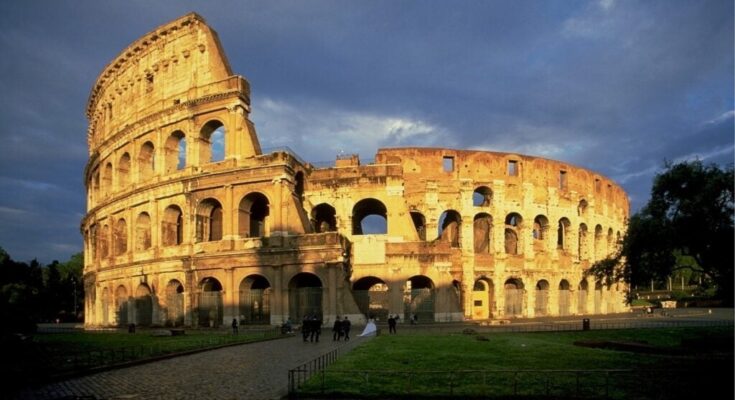Ancient Romans loved spectacles so much that they would occasionally fill the Colosseum with water to enact naval battles.
The Colosseum in Rome is known as the main venue where great spectacles were held. The most well-known was the gladiators’ fights to death. These appeased the crowds’ thirst for blood. The bloodier the fight, the better.
The gladiators were criminals and slaves who, in a sense, were sacrificed for the entertainment of the emperor, the Roman ruling class, and the masses. They were strong, able men and skilled fighters who did their best to bring opponents to their death for their own survival.
Roman satiric poet Juvenal (c. 55–127 AD) coined the phrase “bread and circuses,” meaning this is what people want. As such, this is also exactly what Roman emperors provided to make them escape from and forget their real life problems. The epigram “bread and circuses” is still used today to explain how people get distracted from their real problems by putting great significance on trivial things such as sports, movies, and social media among other things.
Julius Caesar’s naumachia
The naumachiae (singular naumachia, Greek for “ship battle) were circuses of a much grander scale than the gladiator fights that took place in Rome’s Colosseum. The stadium was suited for flooding with water to accommodate ships and stage reproductions of famous naval battles.
The staged naval battles began in 46 BC, when Rome threw a massive party for Emperor Julius Caesar. He had just made his triumphant return after defeating his rival, Pompey the Great. The very first naumachia was part of this celebration and was in honor of his military efforts against Gaul and Egypt in 46 BC.
As the Colosseum was not yet built, Julius Caesar ordered the excavation of a basin close to the river Tiber in Rome, creating a fake lake around 1,800 feet long and 1,200 feet wide. It was surrounded by marble seating for the wealthy spectators.

Up to 3,000 men fought in the first ship battle, which featured 12 Roman galleys. The ships were extremely expensive because they had to be complete in all their details and maneuver like real ships in battle. The actors were generally criminals already condemned to death. It was a truly impressive event, attended by people from all over ancient Italy.
The Romans called these shows navalia proelia (naval battles), but they are commonly known by the equivalent Greek term naumachia, which came to indicate at the same time the show and the basin built for it.
The games move to the Colosseum
When the Colosseum was finished, the Romans entertained the idea of celebrating the grandiose building’s capability by flooding the Colosseum and holding a massive naval battle inside, similar to that of Julius Caesar. The first Colosseum naval battle was held during the arena’s opening ceremony.
It was Emperor Titus who ordered the new Colosseum to be flooded. This time, however, they used special flat-bottomed ships to accommodate for the shallow water. The event replicated the battle between Athens and Syracuse (413 BC) in which the latter obliterated the Athenian navy. The Romans even made an artificial island in the middle of the arena where the sailors landed to fight.
From then on, the Romans reproduced famous historical battles, including the Greeks beating the Persians at Salamis and the Corcyreans destroying the Corinthian fleet. In one naumachia, a fortress was built in the middle of the basin so that the “Athenians” could land and take the “Syracusan” stronghold.
Roman historian Cassius Dio (c. 165-235 AD) wrote that:
“Titus suddenly filled this same theater with water and brought in horses and bulls and some other domesticated animals that had been taught to behave in the liquid element just as on land. He also brought in people on ships, who engaged in a sea-fight there, impersonating the Corcyreans and Corinthians.”
Criminals were mostly used for the battles, but sometimes there were real sailors and soldiers fighting. According to the poet Martial (c. 38-102 AD) the Colosseum naumachiae were staged in the first years after the inauguration, but modern archaeologists claim they were later abandoned because it was very difficult to make the arena watertight to a sufficient depth (about 5 ft or 1.5 m) to float the ships.
When during the reign of Emperor Domitian (r. 81-96 AD) the hypogeum, the vast network of tunnels and storage rooms under the floor was built, holding water battles at the Colosseum would no longer have been possible.



